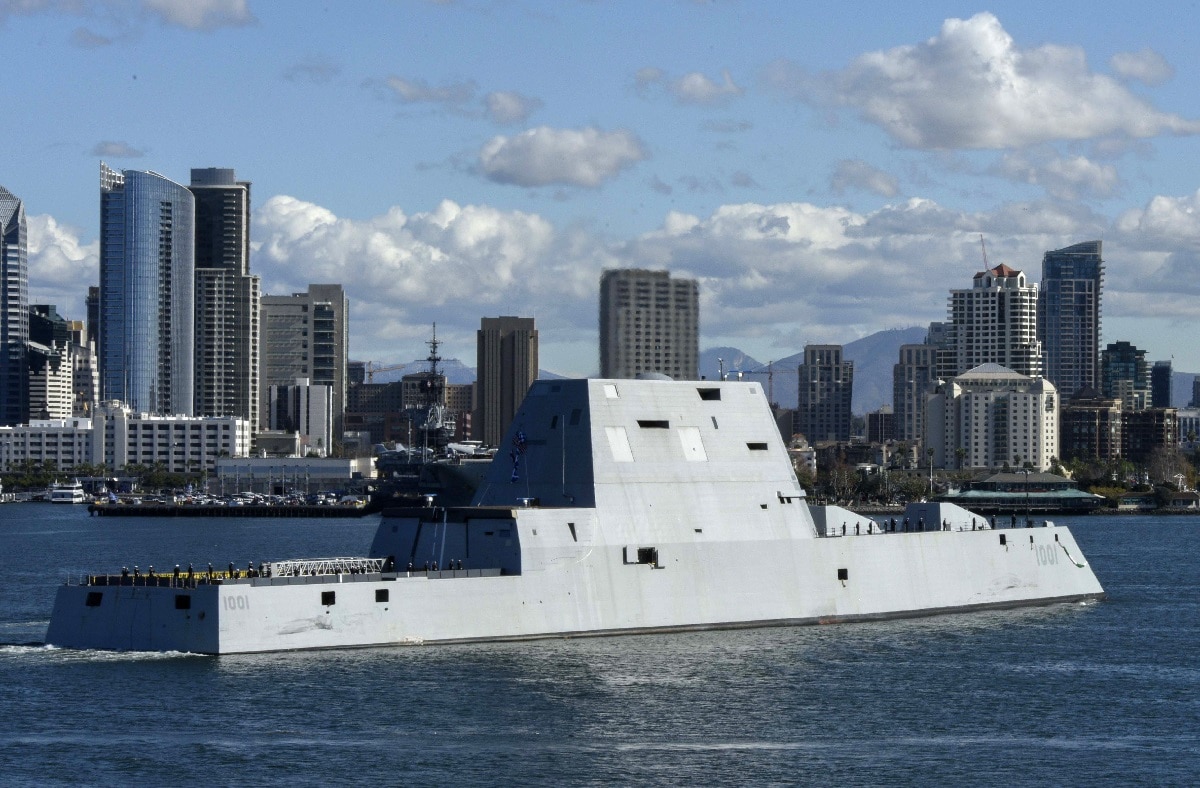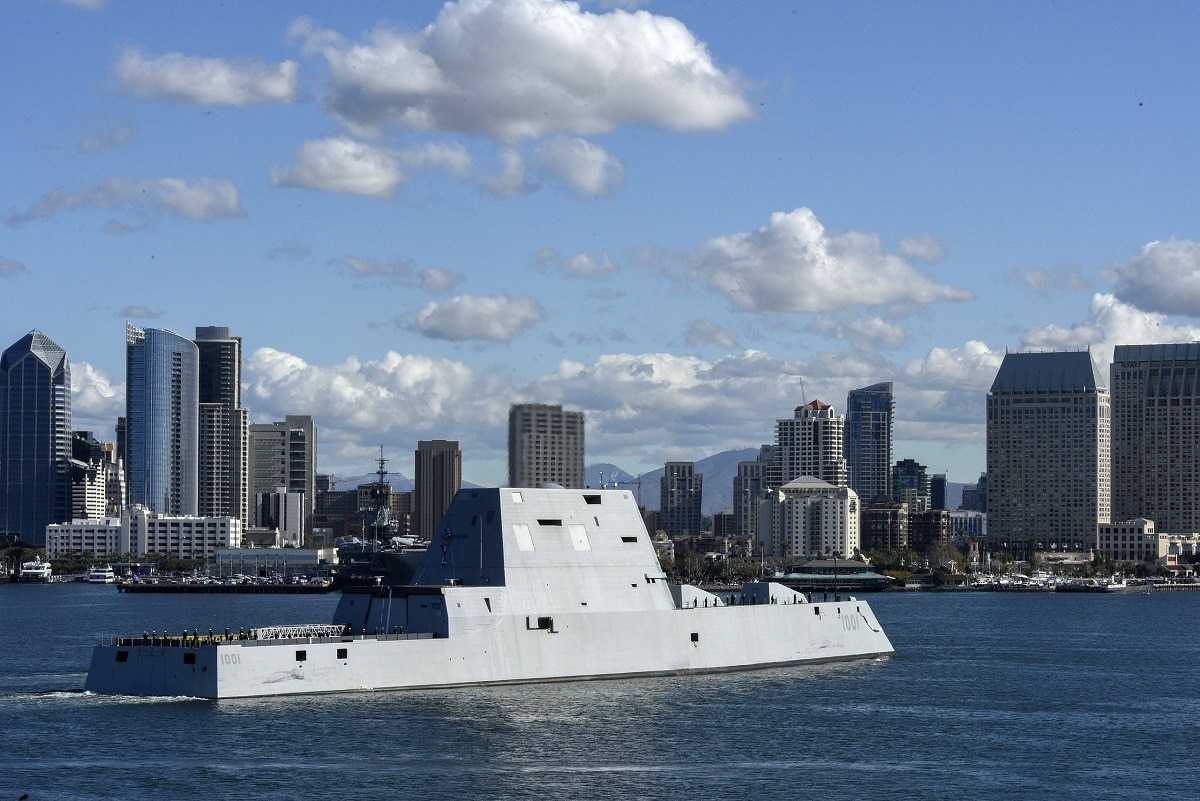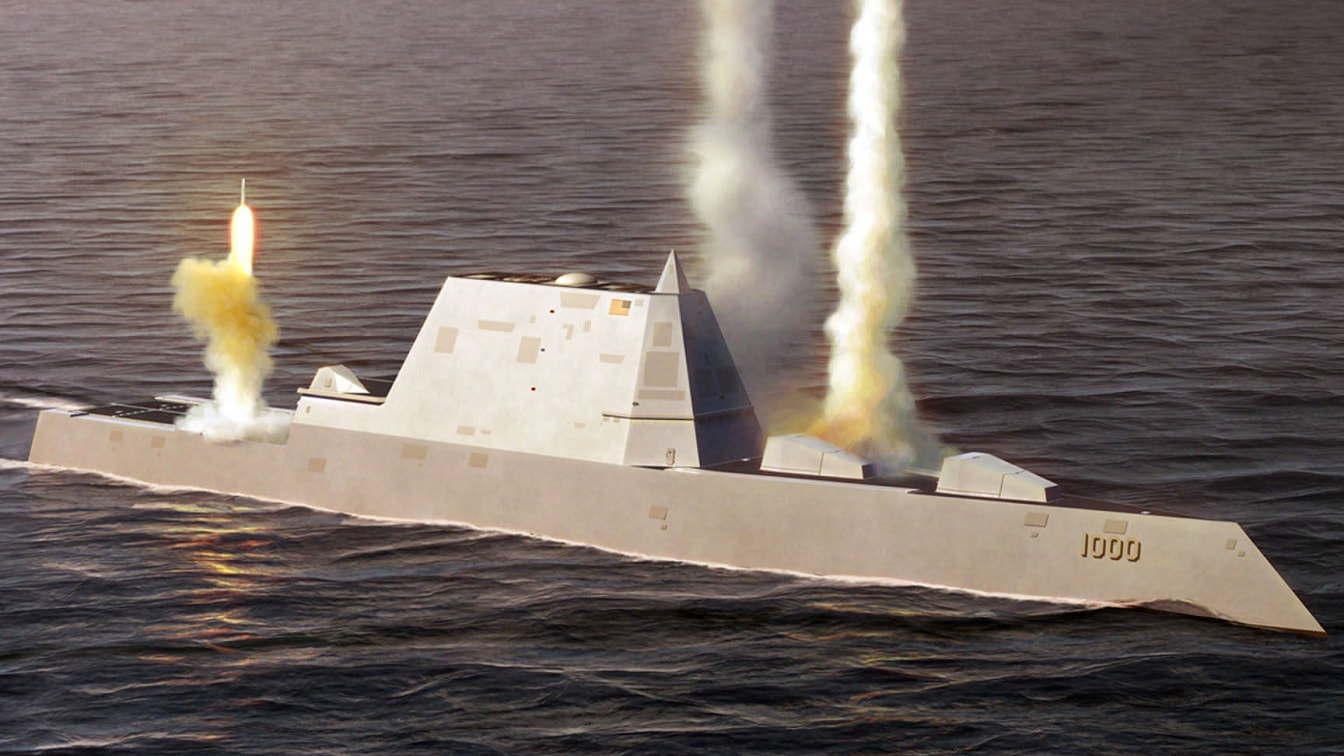The Zumwalt-Class Destroyer Fell Short of Expectations – The United States Navy’s Zumwalt-class destroyer was billed as the future of naval warfare. Designed to incorporate brand new stealth technology, and brand-new weapons systems, the Zumwalt was to replace the aging Arleigh Burke-class. Initially, the Navy was scheduled to procure 32 Zumwalts. But the program went rampantly overbudget while the new ship performed below expectations. The Navy withdrew support, asking Congress to stop procuring Zumwalts and instead build more of the familiar, reliable Arleigh Burke destroyers. Congress obliged and only three Zumwalts were ever delivered.
The Zumwalt-Class incorporated stealth technology
The Zumwalt was an ambitious project, full of innovative technology. For starters, the Zumwalt was a stealth ship. Despite being 40 percent larger than the Arleigh Burke, the Zumwalt has a radar cross-section (RCS) comparable to a fishing boat. The key to such a deceptive RCS is the Zumwalts hull design. The Zumwalt’s hull grows narrower above the waterline, in a tumblehome style. The tumblehome was common on wooden warships and had a flare of popularity with steel warships in the late 19th century. But when three of four Russian tumblehome battleships were lost in the Russo-Japanese War, the design was declared ineffective for modern warfare and fell out of style for nearly one hundred years. Now, stealth-seeking modern navies are reintroducing the shape to meet low-RCS requirements.
In addition to the tumblehome design, the Zumwalt has a composite deckhouse, which encases the ship’s sensory and electronic equipment in low RCS material. Between the tumblehome hull and the composite deckhouse, the Zumwalt’s RCS is about 50 times harder to detect on radar than older destroyers. And the Zumwalt is quiet—with an acoustic signature more similar to a Los Angeles-class submarine than a surface warship.
However, the applicability of the Zumwalt’s stealth has been called into question. The Zumwalt was designed to provide Naval Surface Fire Support with a focus on land attacks. So, the Zumwalt was meant to operate in typically crowded, near-shore waters where ships can be tracked visually. And the Zumwalt, naturally, was intended to fire its impressive arsenal—meaning, that once the ship started firing, its stealth properties would be compromised.
The Zumwalt-Class was outfitted with modern weaponry
To adequately provide Naval Surface Fire Support, the Zumwalt was designed around a bevy of modern weapons. Actually, a bevy of modern weapons were designed around the Zumwalt.
BAE built the Advanced Gun System (AGS), a naval artillery system, specifically for the Zumwalt. And Lockheed Martin built the Long Range Land Attack Projectile (LRLAP) as ammunition specifically for the AGS. In fact, the AGS cannot operate without the LRLAP—a rocket-assisted, 155m projectile with fin glide trajectory. So, when the Navy cancelled procurement of the LRLAP, the AGS was left without ammunition. That’s right: The AGS does not have any ammunition.

181207-N-IW125-1021
SAN DIEGO (Dec. 7, 2018) The Pre-Commissioning Unit (PCU) Michael Monsoor (DDG 1001) arrives in homeport of San Diego. The future USS Michael Monsoor is the second ship in the Zumwalt-class of guided- missile destroyers and will undergo a combat availability and test period. The ship is scheduled to be commissioned into the U.S. Navy Jan 26, 2019 in Coronado, Cailf. (U.S. Navy photo by Mass Communication Specialist Seaman Apprentice Nicholas Huynh/Released)

151207-N-ZZ999-435.ATLANTIC OCEAN (Dec. 7, 2015) The future USS Zumwalt (DDG 1000) is underway for the first time conducting at-sea tests and trials in the Atlantic Ocean Dec. 7, 2015. The multimission ship will provide independent forward presence and deterrence, support special operations forces, and operate as an integral part of joint and combined expeditionary forces. (U.S. Navy photo courtesy of General Dynamics Bath Iron Works/Released)

SAN DIEGO (Dec. 7, 2018) The Pre-Commissioning Unit (PCU) Michael Monsoor (DDG 1001) arrives in homeport of San Diego. The future USS Michael Monsoor is the second ship in the Zumwalt-class of guided- missile destroyers and will undergo a combat availability and test period. The ship is scheduled to be commissioned into the U.S. Navy Jan 26, 2019 in Coronado, Cailf. (U.S. Navy photo by Mass Communication Specialist Seaman Apprentice Nicholas Huynh/Released) 181207-N-IW125-1021
The LRLAP worked well—performance wasn’t the issue. Testing proved the LRLAP could hit a target accurately from 59 miles away. No, the LRLAP’s problem was cost. When the Zumwalt-class was slashed from 32 ships to just three, the need for LRLAP shells went down, too. Meaning, the cost behind developing each shell went up. Way up. The cost per individual LRLAP shell rose to an unacceptable $800,000-$1,000,000—roughly the same as a Tomahawk cruise missile. The Navy’s original plan, to buy 2,000 LRLAP rounds, would have cost about $2 billion. The ammo-less AGSs will be removed from the Zumwalts in 2023.
Accordingly, the Zumwalt-class will get a new weapons platform: hypersonic missiles.
Harrison Kass was born in New York City and raised in Newtown, Connecticut. He has since lived in ten U.S. states, plus New Zealand. Kass is currently pursuing a Master’s in Journalism and International Relations from NYU. Harrison is an attorney, pilot, guitarist, and pro hockey player. His top five movies are: The Natural, Hook, Top Gun, E.T., and Field of Dreams. He regularly listens to Dokken.

